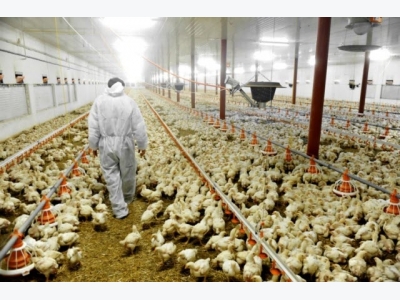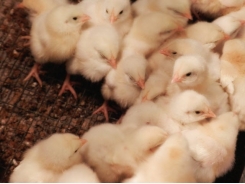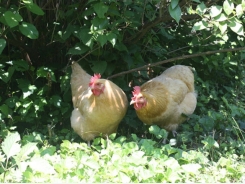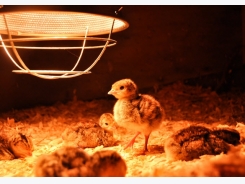Vacuum coating could help hike fat level in broiler feed

Broiler feed producers could exploit vacuum coating technology to enable the inclusion of a higher proportion of fat in broiler diets without compromising pellet durability, finds a literature review.
Canadian researchers, writing in the December issue of Animal Feed Science and Technology, say vacuum coating could also protect heat sensitive ingredients used in broiler diets such as enzymes and probiotics from excessive heat and oxidation by air.
Vacuum coating of pelleted or extruded feed, which is based on a simple physical exchange of air inside the pores of the feed with a liquid, is still largely only applied to high margin feed sector products such as extruded aquaculture and pet food.
Broiler pellet benefits
However, the use of the technology offers many advantages for broiler pellets say the researchers led by Tom Scott, based at the Department of Animal and Poultry Science at the University of Saskatchewan.
Pre-pellet delivery of fats reduces pellet durability and results in losses in bird performance, say the Canadian researchers. Whereas, in their review, Scott and his team found vacuum coating could counter this by allowing post-pellet application of fats.
Vacuum coating could also offer a means of improving delivery and safe handling of offensive compounds, they add.
But the technology requires highly durable and porous pellets for effective application. And the reviewers say a more thorough understanding of how to apply vacuum coating is still needed.
Fat inclusion
The Canadian researchers cite a reference test (International Research Association of Feed Technology, IFF, Strauch, 2002) that indicates the level of fat inclusion in a pelleted broiler diet was doubled to 100g per kg by vacuum coating.
They also note a study by Borquez and Perez from 2007 where the authors claim they successfully incorporated 50 to 70g per kilogram of extra fat in broiler pellets using vacuum coating without losses in pellet durability, thus increasing the energy content of broiler diets.
The feed industry often uses an excess of bioactives to compensate for any loss in their activity during processing, handling and storage, say the researchers
The reviewers note: “In the traditional post-pellet liquid coating system, most of these ingredients are sprayed onto the surface of pellets. When these fines are re-pelleted, the bioactives will be destroyed by heat during conditioning and pelleting.
Engelen and van der Poel (1999) reported that the absorption of enzymes by the pellet is very low and in fact, the enzymes remain on the outer surface of the pellet. Due to these reasons, a post-pellet liquid infusion system - vacuum coating - can facilitate the incorporation of heat sensitive ingredients into the pellet (Li et al, 2003).”
Short-chain fatty acid protection
The team cites studies showing protective coating of short-chain fatty acids like butyric, propionic and formic acids that are added to broiler diets to reduce growth of gut pathogens, improve immunity and improve carcass quality has resulted in improved efficiency (Van Immerseel et al, 2004, 2005, Boyen et al, 2008 and Smulikowska et al, 2009).
“Vacuum coating may be useful to protect these bioactives from the harsh environment of the digestive tract and to reduce absorption in the proximal gut,” said Scott and his team, adding that more research is needed in this area.
Vacuum coating of pelleted feeds needs investment in equipment, energy, time and labor, which all lead to a higher priced feed, says the University of Saskatchewan review team but they add: “Vacuum coating may justify the investment because of reduced feed ingredient costs, less safety margin of additives and improved performance, health and uniformity of birds.”
Related news
Tools

Phối trộn thức ăn chăn nuôi

Pha dung dịch thủy canh

Định mức cho tôm ăn

Phối trộn phân bón NPK

Xác định tỷ lệ tôm sống

Chuyển đổi đơn vị phân bón

Xác định công suất sục khí

Chuyển đổi đơn vị tôm

Tính diện tích nhà kính

Tính thể tích ao




 Enzyme package may boost value of emerging chicken…
Enzyme package may boost value of emerging chicken…  How to Build a Brooder
How to Build a Brooder